High-flying skydive stunts! Steering-wheel voice commands! Predictive search that knows your life! That was June for us, one big sneak peek of the mobile platform future, a flurry of OS features and software specs that Apple, Google, Microsoft, and RIM lobbed at us from San Francisco area events all in the same month. It was so busy around here, we CNETers dubbed the month “Junesanity.”
The specs that emerged from these four events are a peek at the near future of mobile phones. In addition, the flashy presentations were designed to win developers and consumers to each company’s side as they ready for the next phase of the mobile turf war.
What’s coming, a recap
Here’s what the Big Four mobile software-makers announced.
iOS 6
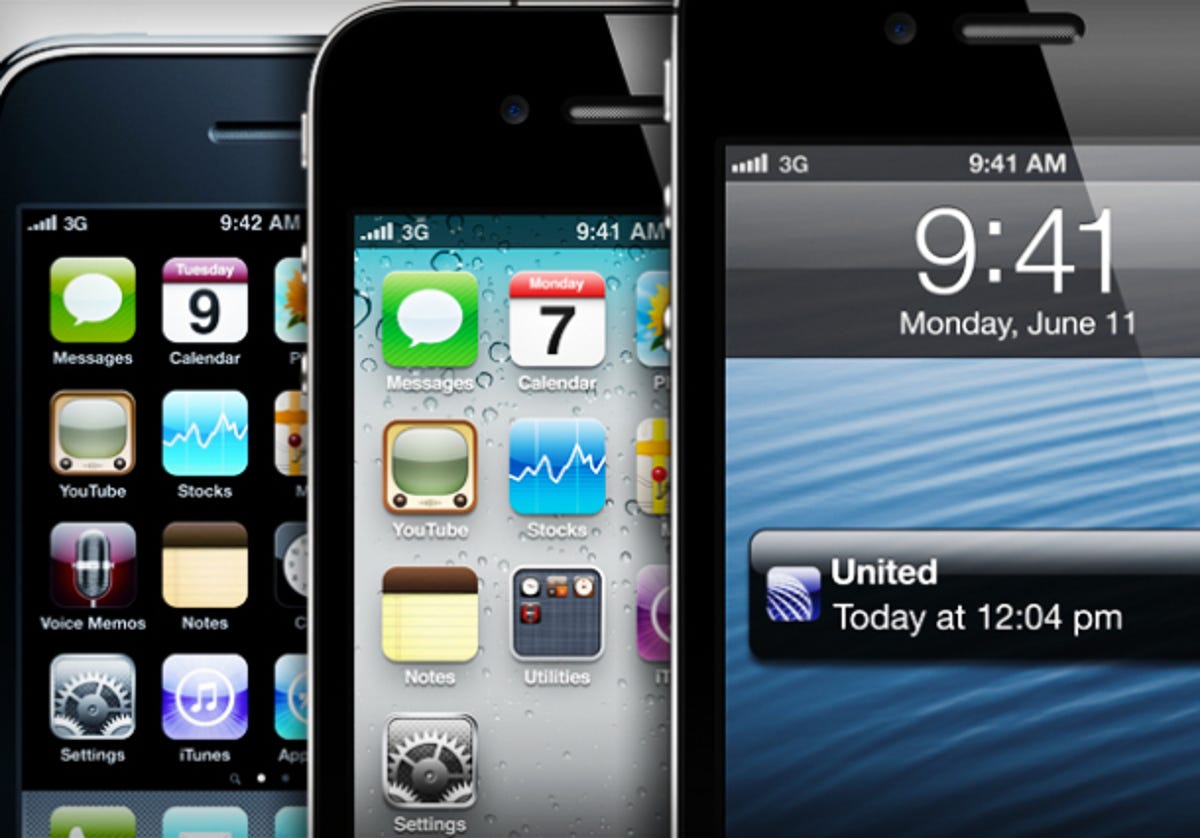

CNET
At its annual WWDC conference on June 11, Apple announced a slew of iOS 6 updates that will arrive this fall. Many catch up to features already found in Android and Windows Phone, like Facebook integration, video calling over the cellular network, and turn-by-turn voice navigation. However, iOS 6 will also bring some new toys to the playground, like natively storing and accessing tickets to events, and setting call reminders.
The slick new features of Apple iOS 6 (pictures)






Other standout features include offline Web reading, 3D maps, and a smarter Siri that will be able to open apps and get you dinner reservations. At some point down the road, Siri will also wind up in certain cars.
Of course, these latest and greatest features only account for what Apple is willing to tell us now, without giving away any functionality related to new hardware, like a better camera in the iPhone 5, or any processor-related gaming tidbit. It’s probable that Apple’s next smartphone announcement will reveal an iOS 6 zinger.
BlackBerry 10
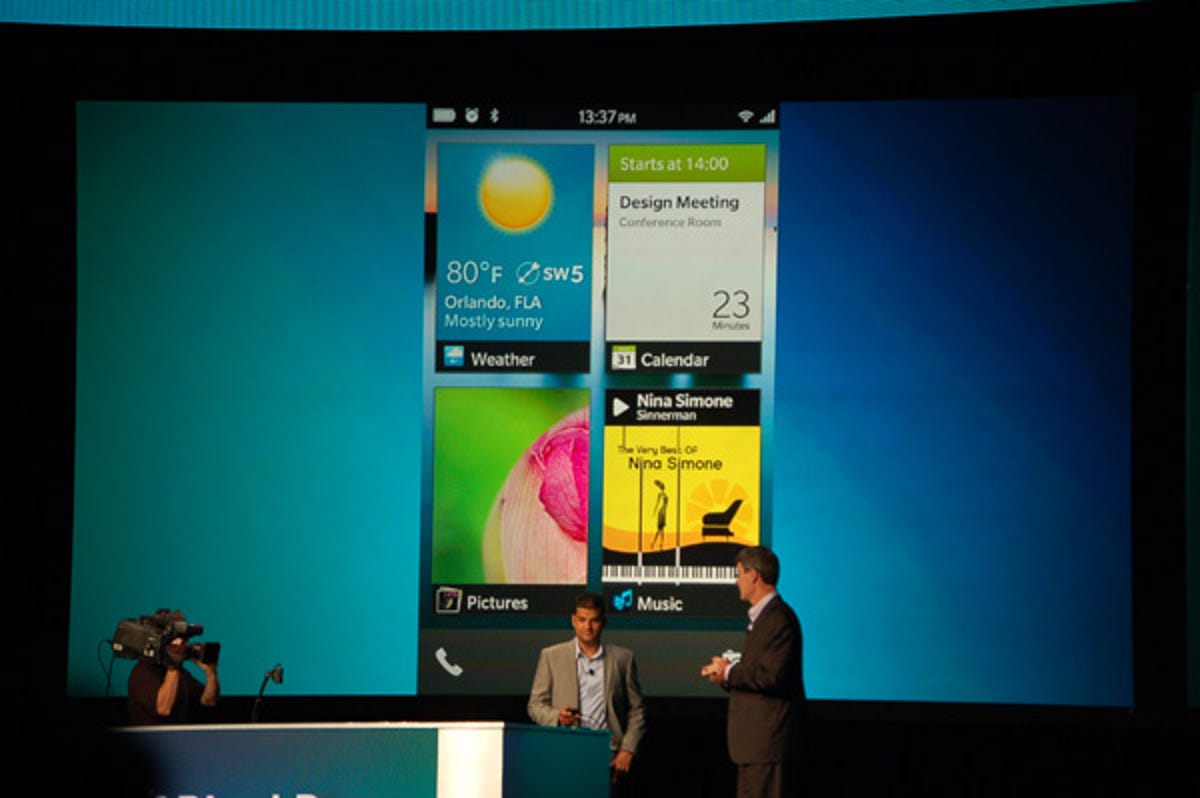

Screenshot by Kent German/CNET
RIM may have first shown off bits and pieces of the BlackBerry 10 operating system in early May, but June is when the company kick-started its developer-focused BlackBerry 10 Jam world tour, and began inviting press in on just how it plans to keep developers on board the wobbly ship.
A closer look at BlackBerry OS 10






BlackBerry 10 OS and the hardware it’ll go on are far from complete, but there is some definite promise. There will be a brand-new interface with a cleaner, more minimalist layout than ever before. There’s also a new multitasking workflow, called Flow, and an intelligent virtual keyboard that can easily predict your sentences and delete or complete words with a simple gesture. Brand-new camera processing features will be able to detect faces, and a novel feature will let you rewind a previous frame to get the exact expression you want.
Not much is known about the hardware itself, save that it’s expected to host a high-resolution screen. Rumors and leaks point to a 768×1,280-pixel resolution for the top-of-the-line series.
It’s still early days for BlackBerry 10, and we saw relatively little about how well the OS operates. Until we see more, neither my fellow editor Brian Bennett nor I are convinced that the new OS is the game-changer that RIM and some loyal developers swear it is, but the features we know about so far are a big step in the right direction.
Windows Phone 8
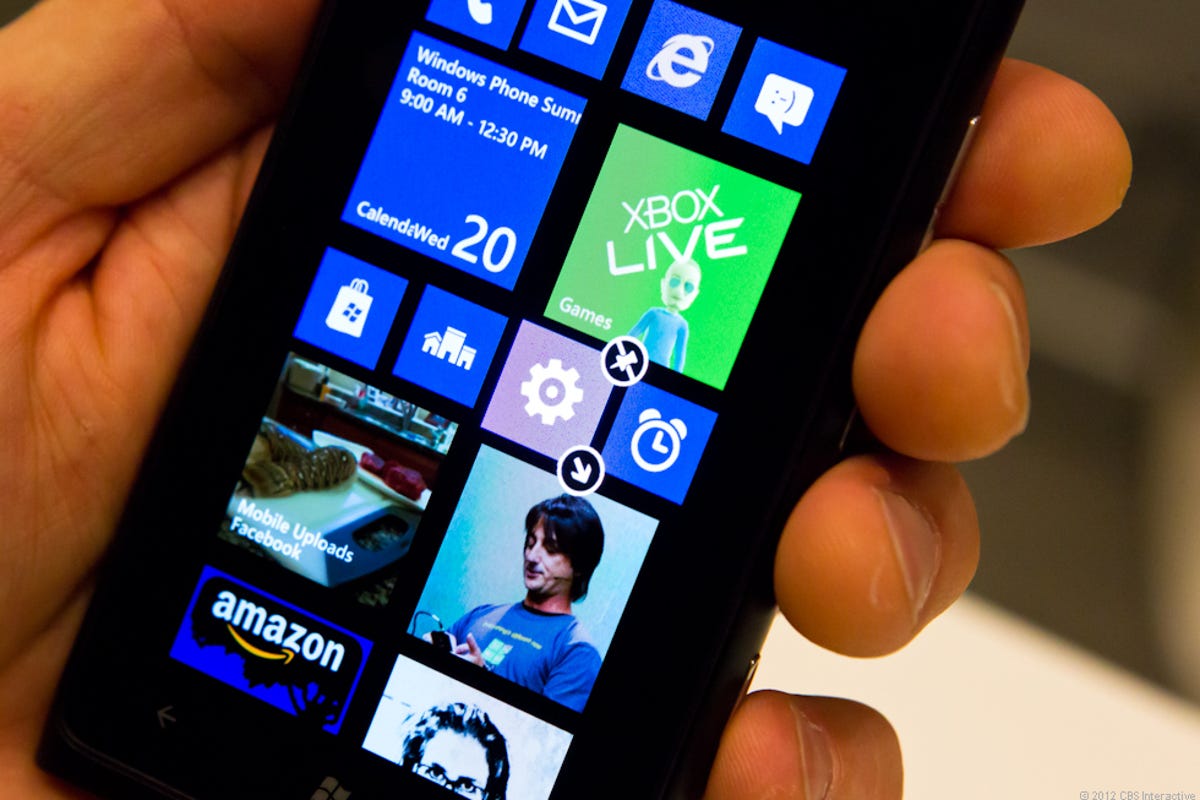

Josh Miller/CNET
Microsoft unveiled Windows Phone 8 on June 20. The major OS update will get support for multiple processors, starting with dual-core Qualcomm chips, two new compatible screen resolutions (including HD), and integrated NFC.
A glimpse at Windows Phone 7.8 and 8 (pictures)






Microsoft is also integrating VoIP and is improving multitasking smoothness. Rumors points to an innovative, unannounced keyboard designed for one-handed typing. There’s a revised start screen that gives you resizable dynamic tiles across more of the screen surface. A shared kernel with Microsoft’s Windows 8 platform for desktops and tablets will be able to let developers for Microsoft’s other computing platforms more easily program for Windows Phone.
The first handsets are slated for fall, eventually to 180 countries. Unfortunately, existing handsets aren’t eligible for the Windows Phone 8 upgrade.
Android 4.1 Jelly Bean
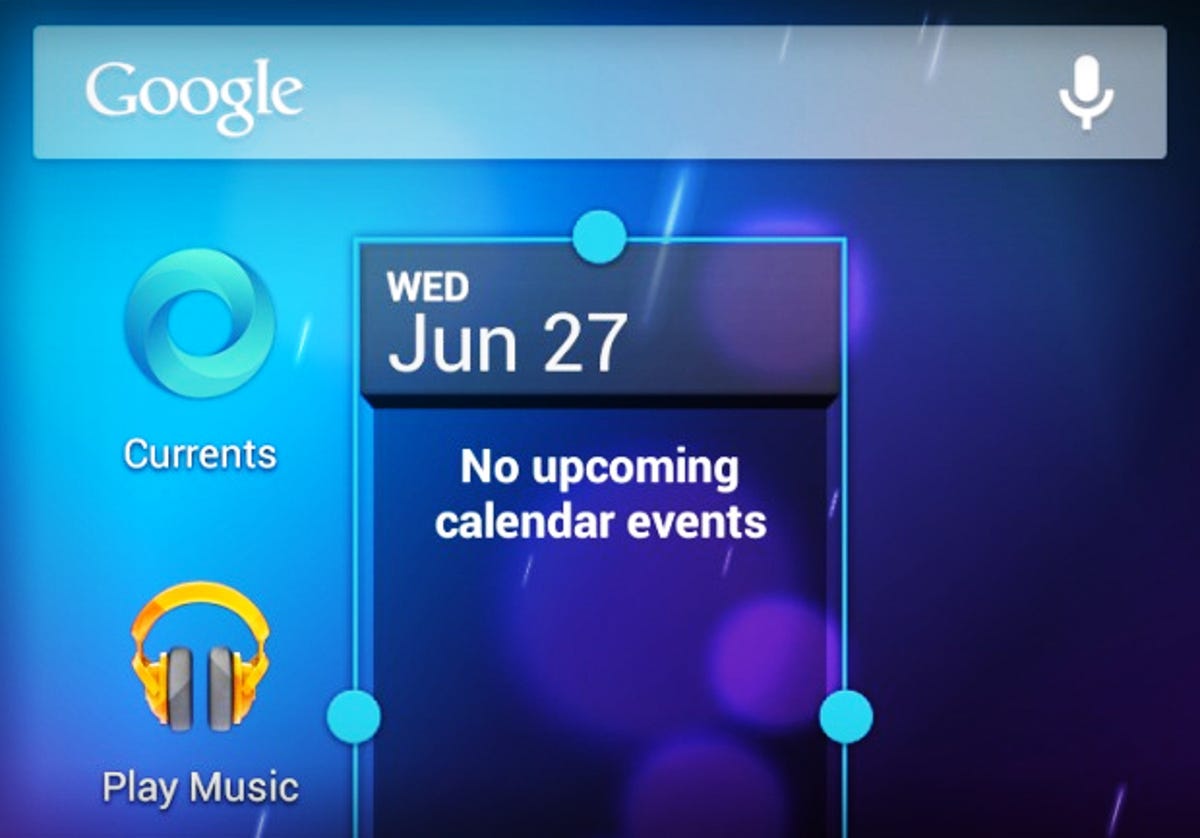

CNET
Google was the last of the four to debut its new mobile plans, but on June 27, it announced Android 4.1 Jelly Bean, an upgrade from Android 4.0 Ice Cream Sandwich. Jelly Bean’s big draws are its revamped search app and its more substantial notifications. Google has made search front and center in Jelly Bean, so that it looks and feels more like Siri. The Voice Actions interface and voice readout are changed, but the bulk of Voice Actions remains the same as before.
Hands-on with Android 4.1 Jelly Bean (pictures)






What is new is Google Now, an optional program that can tap into your GPS coordinates and several apps to help you organize your life and anticipate your needs, down to suggestions on when to leave to make a certain appointment on time. The notifications menu also gets thicker descriptions for events that pop up there, and the capability to do things like share a photo or respond to a message.
Offline voice typing is new, predictive text is smarter, and overall performance is smoother. In addition, there are resizable widgets, and the NFC feature, Android Beam, can now handle larger files like photos and video in addition to URLs and maps.
Staging a smartphone battle for fall
For Apple and Google, the struggle is for platform dominance. Apple had the upper hand for a long time after the first iPhone launch, with Grade A hardware and the more developed operating system, but Android has wrested away control and now leads the U.S. market with roughly 51 percent to the iPhone’s 32 percent.
Right now the ball is in Apple’s court. Secrecy and surprise have always worked in Apple’s favor, and depending on when the company announces and sells its iPhone 5 this autumn, its newest handset can draw — and keep — customers’ attention. Discounts on its iPhone 4S will also attract new buyers across U.S. carriers.
Related stories
- Android 4.1 Jelly Bean review
- iOS 6 hits major marks
- BlackBerry 10’s bold new features explained
- Windows Phone 8 shipping on new phones this fall
Compare this momentum to Google’s Jelly Bean roll-out, which will be slow and fragmented as always as the manufacturers and carriers test and slowly deploy updates to select phones, starting with Samsung’s Galaxy Nexus and Nexus S, among them. Beyond updates, it’ll be up to manufacturers to integrate Android 4.1 into their handset release plans, or you can buy a new, unlocked Samsung Galaxy Nexus from Google now. As great as the little bump is from 4.0 to 4.1, Jelly Bean isn’t an earth-shattering update.
For Microsoft and RIM, the next few months will be a pitched fight for survival against the undeniable combined force of Android and iOS. Microsoft has now spent two years trying to make Windows Phone stick, and RIM keeps moving higher up the endangered species list.
RIM’s tragedy has gone from bad to worse to so-bad-I-can’t-look, with plummeting share prices and sales, massive layoffs and probably more to come. There’s also the high possibility that RIM will hack apart its business and sell off parts, and its final hope, future BlackBerry smartphones running RIM’s BlackBerry 10 operating system, is delayed from late 2012 to early 2013.
Even if the forthcoming BlackBerry 10 arrives in a blaze of glory with innovative features and flawless hardware, with such low investor and customer confidence, who will buy a BlackBerry?


Now playing:
Watch this:
BlackBerry 10 in action
1:45
In an interview with CNET, RIM’s managing director for the U.S., Richard Piasentin, pointed to a still-loyal customer base, and reminded the public that BlackBerrys serve 90 percent of Fortune 1,000 companies. In addition, the smartphone maintains its pedigree in various markets overseas.
Microsoft’s challenge is comparatively simple, especially now that its OS can handle phones with multiple processors, HD resolution, microSD cards, NFC. However, leaving current users in the lurch because of its prior stringency isn’t going to do anything for traction, since existing users have to buy new handsets to stick with Microsoft.
For Redmond, the third year into Windows Phone recycles the same old challenge — getting its platform competitive enough to sell.
Winners and losers
It’s no coincidence that Junesanity’s major announcements culminate in a fall showing for three of the four OS-makers. Autumn begins the smartphone world’s most important season, after all, since it ramps up to holiday sales. Here’s how I suspect the winners and losers will shake out.
A worthy OS upgrade combined with a highly anticipated hardware unveiling give Apple the greatest interest and appeal going into fall. It doesn’t hurt that Apple has traditionally led the pack in terms of premium build materials, including the camera. Status: Biggest winner.
Google is sitting pretty, thanks to its platform popularity and myriad partner phones. Android 4.1 Jelly Bean is a great update that will add a lot of functionality, but come fall, few will have access to everything that Android can offer. Status: Moderate winner.


CNET
Barely hanging on, Microsoft is still catching up, and has yet to offer an innovative feature that no other OS can claim. Sure, good things are coming to bring Windows Phones up to speed on the hardware front, but with the iPhone 5 and Android 4.1 Jelly Bean arriving in roughly the same time frame, Windows Phone 8 will be largely ignored. Status: Loser.
RIM’s BlackBerry 10 OS is delayed, and RIM will have nothing to show customers save some low-cost, rehashed BlackBerry Curve phones. RIM’s days of attracting hordes of new customers is over in markets where Android and iOS already reign supreme. Status: Biggest loser.
With over 25 percent market share, Samsung is sitting pretty. It has a long string of Android successes, like the Samsung Galaxy S III (S3). Although its current Windows Phone 7.5 handsets are now as good as bricks, the Korean electronics giant has enough cash to stick with Microsoft through Windows Phone 8. Status: Winner.
Microsoft’s lack of upgrade path for existing Windows phones to OS 8 puts Nokia in a pinch, since the handset maker tied the fate of its smartphone business to Microsoft. Still, the Nokia Lumia 900 and Lumia 710 showed the world what Nokia can do. Besides, Nokia has a contingency plan, the Finnish company says, if Windows Phone doesn’t pan out. Status: To be determined.
Once the rising star of mobile handset-makers, HTC has stumbled of late. Samsung is eating HTC’s lunch on the Android side, even though the HTC One X and One S are terrific handsets, and HTC has a history of producing excellent phones. HTC is getting behind Windows Phone 8, but likely not at Samsung’s rate. HTC trails Samsung, but if it acts fast on Android 4.1 Jelly Bean updates and new phones, it still has a chance to increase its share. Status: To be determined.
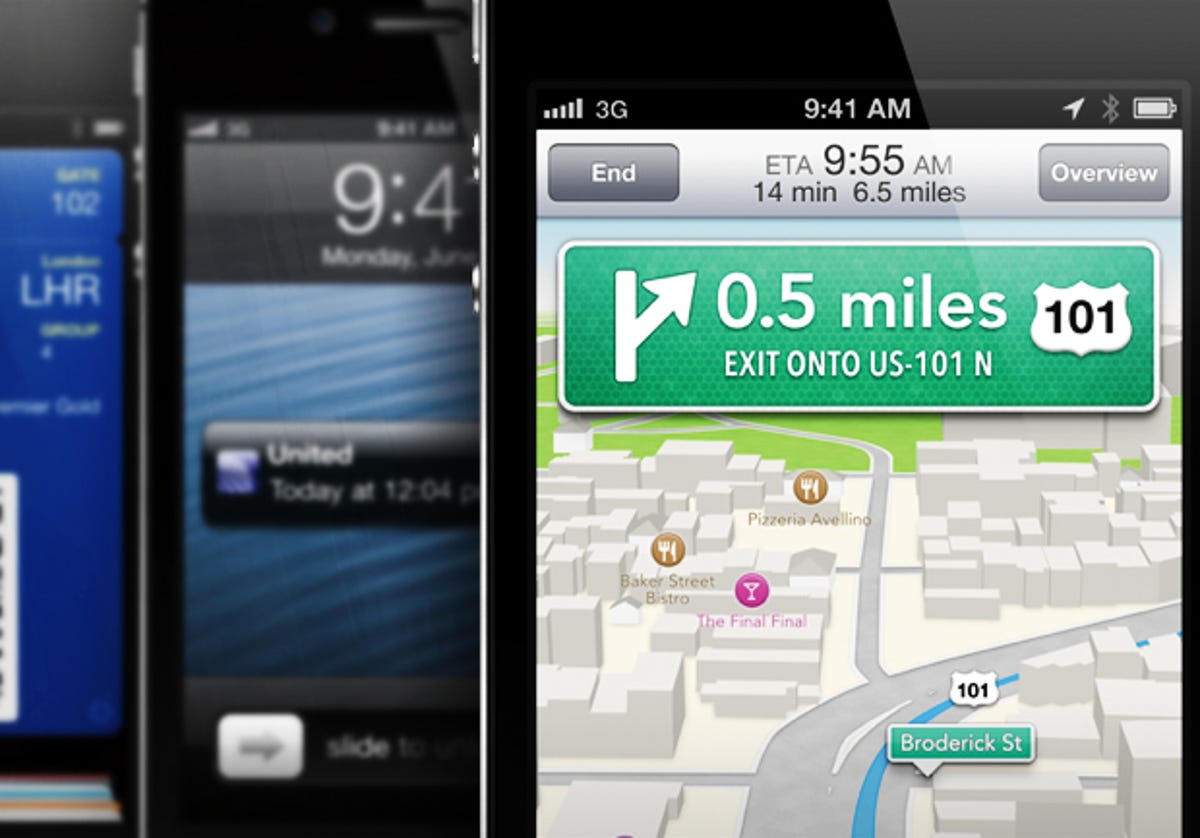

Sarah Tew/CNET
For a company that’s meant to be Google’s closest supporter (and wholly owned subsidiary,) Motorola has been suspiciously absent from Android plans in the U.S. market. We knew that Motorola was pulling back on quantity to concentrate on quality, but if the company doesn’t act soon, it’ll miss out for good. Status: Probably a loser.
Conclusion
Of course, we won’t know for a few months what fall will bring, and any carrier or manufacturer could pull a surprise from thin air. Whatever the outcome, the mobile heavyweights are promising plenty of fireworks when the seasons change, and plenty of speculation as the summer months play out.
Smartphones Unlocked is a monthly column that dives deep into the inner workings of your trusty smartphone.
Read more Smartphones Unlocked
- HD Super AMOLED versus Retina Display, and other screens
- Camera megapixels: Why more isn’t always better
- 7 myths about quad-core phones
- The birth of a cell phone
- Confessions of a cell phone designer


Josh Long/CNET



